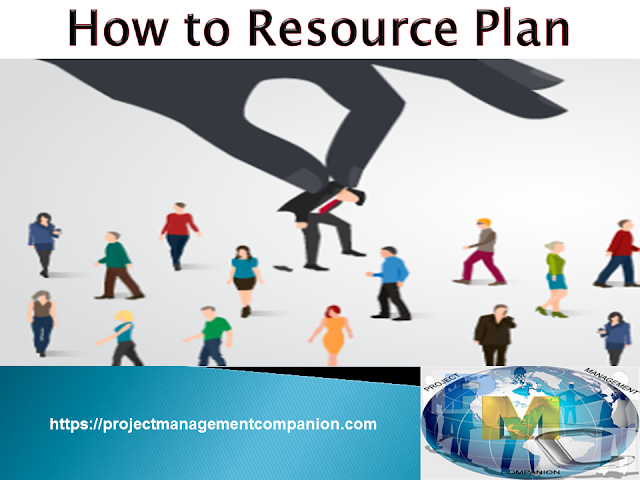When
managing a project or a project portfolio, it’s critical that resources and
workload for each are intelligently distributed. Without proper resource
allocation, projects can quickly get out of control in terms of expense and duration.
With the
right resource planning techniques, effective planning and management of
resources in any industry can set you up for success. But before the break down
on how Projectmanagementcompanion.com
provides the perfect tools for resource planning and management, there must be a
firm understanding on what resource planning is and how to compose a resource
plan.
Resource
planning is one of the steps required when writing a business plan where all
the resources in a proposed project are identified. This is achieved by
creating a summary for managing workload that is comprehensive enough to make
sure all the resources that are needed to complete the project are clearly
identified. This summary is going to help get a buy-in from the sponsor and
team.
Resources
can be anything from equipment to project sites to people. Below is a short
list of some resources which should be identified when planning a project?
·
Type of team needed
·
Roles and key responsibilities for each team
member
·
Number of people required to fill each role
·
What equipment needed and its purposes
·
Job locations or meeting rooms required
·
Types and number of equipment needed
·
Total amount of material needed
All these
can be entered and tracked with the tool found in Projectmanagementcompanion.com
for more accurate resource planning and management.
The creation of a project plan is achieved
by;
·
Schedule the dates for using the planned
resources. That includes when and for how long they are needed, the people
assigned to the team, equipment rental, project site rental and anything else.
·
Identify the amount of resources required per
project activity. Each day many resources will be used, this part of the plan is
used to detail them on a daily basis.
·
Create a detailed resource use schedule. Take
those durations and amounts and collect those on a calendar or timeline to make
sure the resources are allocated correctly.
In order to
include all the information required to have a process in place. Basically,
it’s a three-step process of listing, estimating and then constructing. This
entire process can be expedited by using tools from Projectmanagementcompanion.com
resource planning tools to map out projects. Before this is performed, it is
best to go through each of those steps in more detail.
Step 1: List the Resources
Simply start
a list in the project management software. Write down all the different
resources needed. Use the above bullet points as a structure. Who are needed to
do the tasks that make up the project and identify all of those roles. That
includes full-time, part-time and contractors.
Equipment
should be included, the same steps should be performed as were done for the
labour component, and identify all the equipment going to be needed to get the
project completed. That list should include anything from office equipment such
as computers, photocopies and other devices to telecommunications and
machinery.
The next
item on the list is the materials. What is the non-consumable materials needed
to complete the project activities? These can be materials necessary to build
physical deliverables, such as IT devices, wood, steel, and concrete.
Step 2: Estimate How Many Resources
Next is to
determine how many of the listed resources will be needed throughout the life
cycle of the project. For example, how many hours will be needed from the team?
Break that down per role. Do the same for equipment. How many pieces of
equipment are going to be necessary?
The same
goes with material, estimate what amount of material, in terms of square
footage, number of units, etc., is going to be necessary for the project. How
much hardware is needed to buy, including the required license software?
Get as
accurate an estimate as possible, and enter that data into the project
management software. If possible, try to note the date the resources are needed
and what the consumption rate per day, week or month is.
Step 3: Construct a Resource Schedule
Use the information
collected in the first two steps to build a detailed resource schedule in the
workload management tool. Also specify the resources required to complete the
project, the time-frames for the consumption of each of those resources and the
quantity of time each resource is going to require per week and/or month.
Add up the
total quantity of resources consumed per week and/or month. Don’t forget to
identify the assumptions and constraints which are going to arise through the
projects life cycle. Once these steps are completed, the resource plan is good
to proceed and the data can be entered into the preferred Project Management
tool.

Comments
Post a Comment